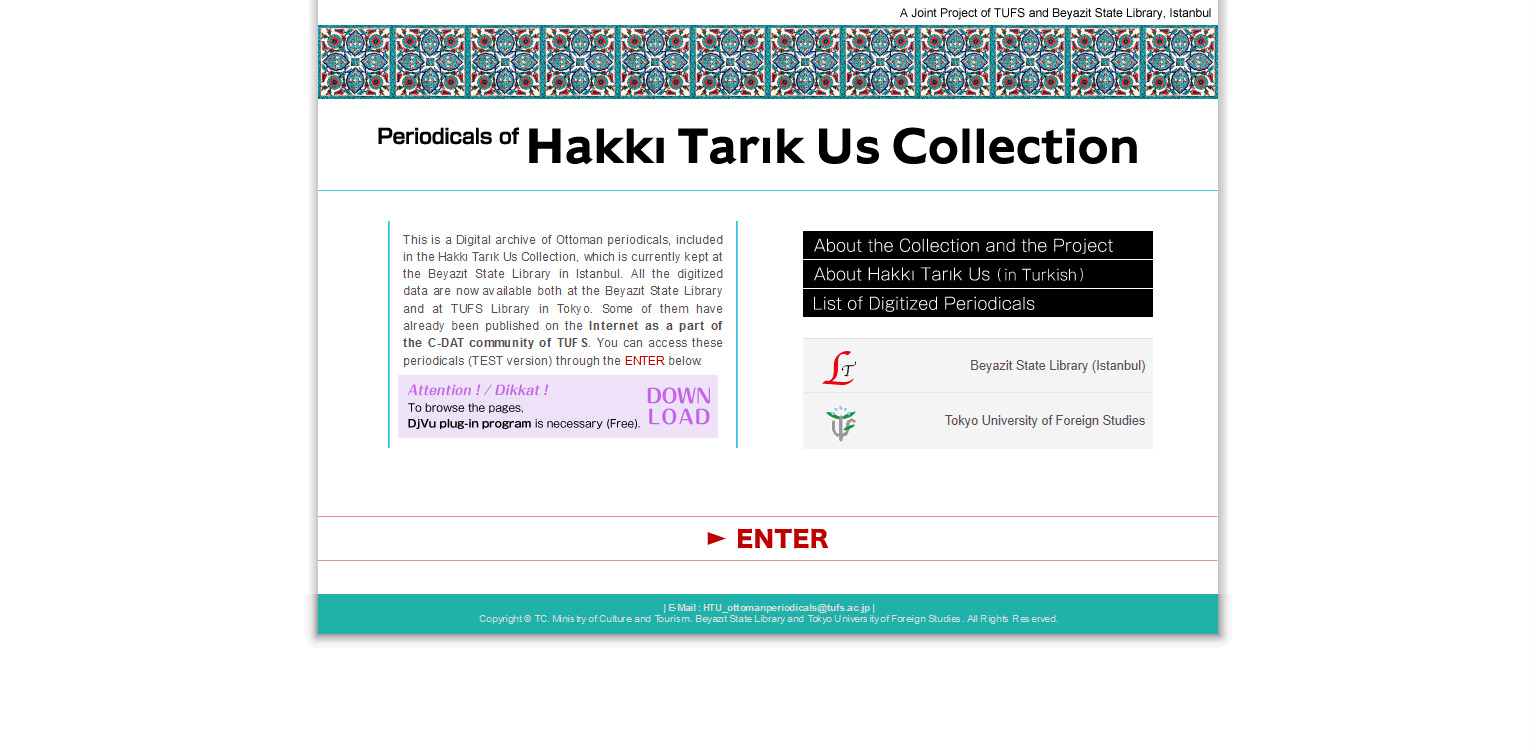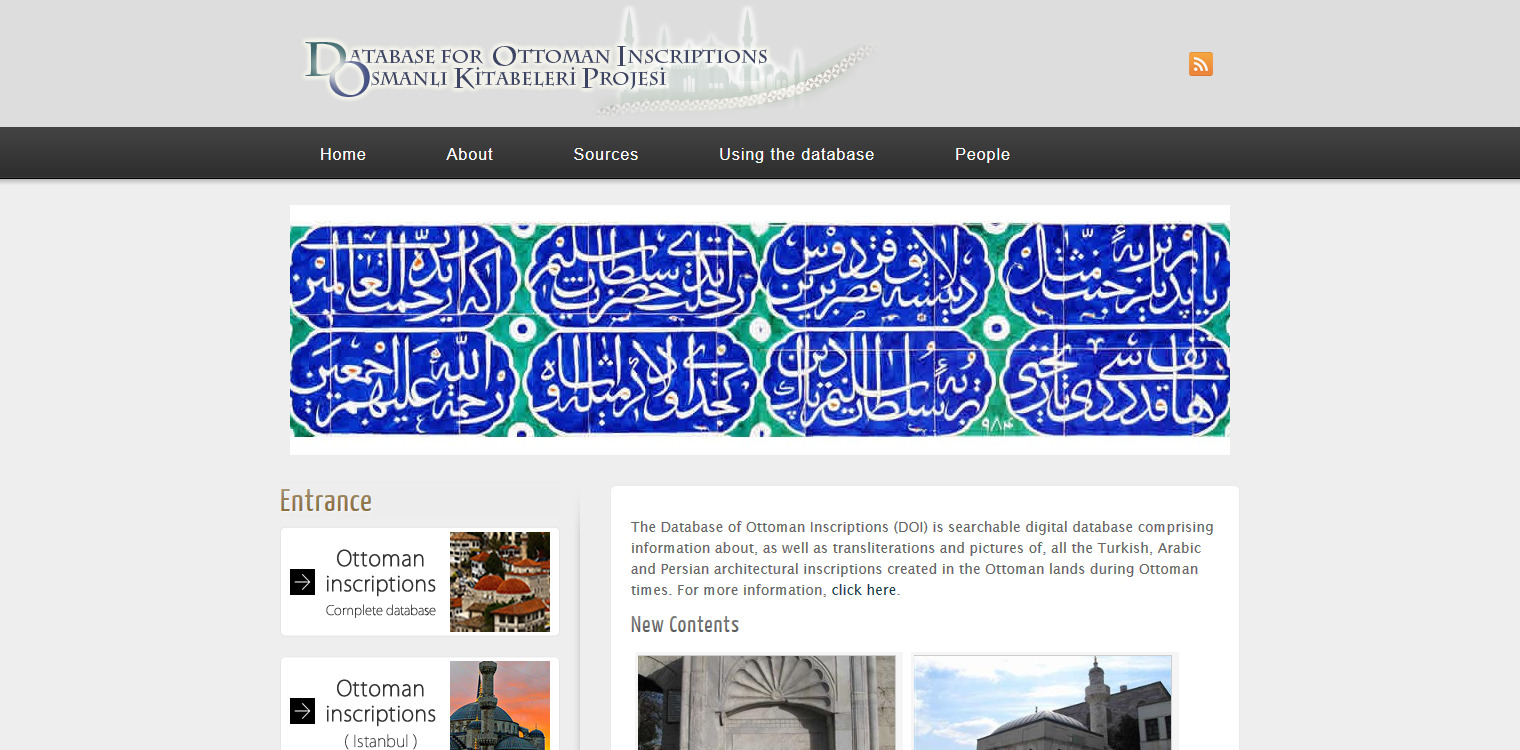
Monthly Archives: May 2017
Call for papers: Islam & Science, an educational approach
The Science & Islam project will be holding its second conference from July 4-9, 2017 at the Royal Institute for Inter-Faith Studies in Amman, Jordan.
As indicated on the conference website, the “purpose of this conference is to provide a forum for philosophical and theological work by Muslim and Christian philosophy or theology graduate students and early career professors”.
 Note that “Submissions are restricted to Muslim graduate students and early career professors from any middle eastern country as well as from Morocco, Egypt, Algeria, Turkey, Pakistan and India”.
Note that “Submissions are restricted to Muslim graduate students and early career professors from any middle eastern country as well as from Morocco, Egypt, Algeria, Turkey, Pakistan and India”.
For more information, click here.
Periodicals of Hakkı Tarık Us Collection
This digital collection of Hakkı Tarık Us periodicals is a collaborative project of the Beyazıt State Library, and Tokyo University of Foreign Studies. The Hakkı Tarık Us Collection -currently housed at the Beyazıt State Library in Istanbul- includes Ottoman periodicals, books, yearbooks, almanacs and salname’s. The collection was named after its owner, Mr. Hakkı Tarık Us (1889-1956), and kept in an independent library after his passing. Between 2003 and 2010, the Beyazıt State Library, and Tokyo University of Foreign Studies proceeded to the cataloguing, digitization, and publication of 1366 periodicals.

Note that the files are in DjVu format, which is an open-source alternative to Adobe Acrobat PDF documents. In order to open them, visitors will need to download the DjVuLibre program.
The website is in English.
A database for Ottoman Inscriptions
 The Database for Ottoman Inscriptions (DOI) is “a searchable digital database comprising information about, as well as transliterations and pictures of, all the Turkish, Arabic and Persian architectural inscriptions created in the Ottoman lands during Ottoman times. While tombstone inscriptions are not included in this database, the database does incorporate those inscription texts which were composed but for one reason or another were not actually carved onto a stone; and also, inscriptions that have not survived the passage of time, but which are available to us in the “chronogram” sections of poetry collections. Incorporating these chronograms will give researchers the opportunity to evaluate inscriptions which were otherwise long lost.
The Database for Ottoman Inscriptions (DOI) is “a searchable digital database comprising information about, as well as transliterations and pictures of, all the Turkish, Arabic and Persian architectural inscriptions created in the Ottoman lands during Ottoman times. While tombstone inscriptions are not included in this database, the database does incorporate those inscription texts which were composed but for one reason or another were not actually carved onto a stone; and also, inscriptions that have not survived the passage of time, but which are available to us in the “chronogram” sections of poetry collections. Incorporating these chronograms will give researchers the opportunity to evaluate inscriptions which were otherwise long lost.
One of the main impetuses for this project was that we ourselves sadly witnessed the disappearance of many Ottoman inscriptions over the short period of a few decades in Turkey or elsewhere. The fact that a number of inscriptions were damaged, lost or stolen was highly alarming and encouraged us to undertake this immense project. Many colleagues warned us about the enormity of the material to be covered. However, the project editors believe that even if this project is not able to immediately achieve the goal of covering every single inscription, a database of Ottoman inscriptions is long due.
The starting point of the project is the systematic recording of the inscriptions of Istanbul. Bursa and Edirne. Still, since the editors have decided to begin by entering previously published data into the database, researchers may encounter entries on inscriptions from cities other than Istanbul as well. For our methodology in collecting the inscriptions, click here.
The Database of Ottoman Inscriptions (DOI) is searchable by the benefactor’s name, the location of the building containing the inscription, and the date of construction, as well the types of script or poem. As such, the database represents an enormous resource for researchers who are conducting studies in the fields of Ottoman history, art history, philology, prosopography, etc. The editors hope that this data will bring new and fresh approaches to the aforementioned fields. To read the instructions on how to use the database, please click here.”
H. Aynur, K. Hayashi, H. Karateke (eds.), http://www.ottomaninscriptions.com/; accessed on 03.01.2017.
Digital Scriptorium
Digital Scriptorium (DS) is a partnership between approximately forty American Libraries, Museums, and Associations housing collections of manuscripts from the Middle-Ages and Renaissance. A list of participating institutions can be found here. Governance is ensured by an Executive Director, and a Board of Directors, and funding comes from membership dues.

Digital Scriptorum offers an online union catalog allowing the discovery of pre-modern resources scattered across the world. Thanks to a shared metadata schema, the catalogue allows the searching of all holdings. Both the basic search and the advanced search offer refining options in the left-hand-side menu such as Language or Location. Visitors will note that descriptive records include persistent URLs in order to encourage direct citation, and sometimes links to the websites and/or digital repositories of the materials’ home institutions.
Digital Scriptorum also offers a digital image repository making those pre-modern manuscripts openly accessible to scholars, students, booksellers, collectors, and the general public. Images can be used under certain restrictions which can be found on the Using the Images page.
The website is in English.

